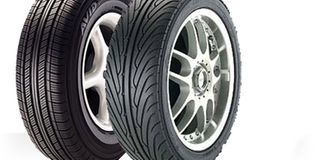Why those tyre treads matter

What you need to know:
When it comes to either stopping or slowing down a car, most people think of brakes but these work with the tyre treads. Mustapha Ziraba explains why.
When talking about stopping power, we tend to focus on our brakes. But it’s on the tyres where the rubber meets the road, so having good brakes isn’t enough. We need to have tyres with enough traction to be able to efficiently convert that braking power into stopping power.
For example, if you are to stop in wet conditions. In order for a tyre to have good contact with the road, it has to move the water out of the way. If it can’t do this, then it shall actually ride on top of a thin film on water, a dangerous occurrence called hydroplaning. This can cause your car to spin out of control. But remember this depends on what speed you are going and how much water it is.
How the treads work
Tyre manufacturers take care of moving the water out of the way by having channels on the tyres for water to flow through in form of treads. If you look at a tyre, you will see tread channels that run around the tyre and those that run across the tyre.
They are designed to direct water away from the tyre so that it can contact the road better.
In case of muddy areas, the loose mud gets into these channels so that the rest of the tyre surface has access to firmer ground for traction. Logically the deeper the channel, the more water it can move or more mud it can hold.
A brand new tyre has very deep channel treads and can easily move and hold a lot of water and mud. As the tyre wears down, the channels become shallower and move less water and hold less mud. When a tyre wears down enough, it can seriously affect your ability to stop on wet and muddy roads.
This is why it’s important to replace your tyres when they get worn out. And in the spirit of having you drive safe and consider the safety of other road users, the traffic officers are very profoundly keen on the depth of the treads of your tyres.
Types
The tread pattern matters, depending on the intended use of the tyre and expected road noise and the visual design appeal of the car. You shall see that off road cars have different designs compared to on road cars. Tyres designed specifically for wet conditions have V-shaped grooves, for example and are designed to rotate in a specific direction usually noted with an arrow on the tyre sidewall.
You have probably seen the wear indicator moulded into the tyre. When a tyre is dangerously worn, this indicator shall become visible. Therefore, tyres are such a big item when it comes to cares that we all want to get as many kilometres out of them as possible but there’s a real safety trade off if you do not replace them as required.




